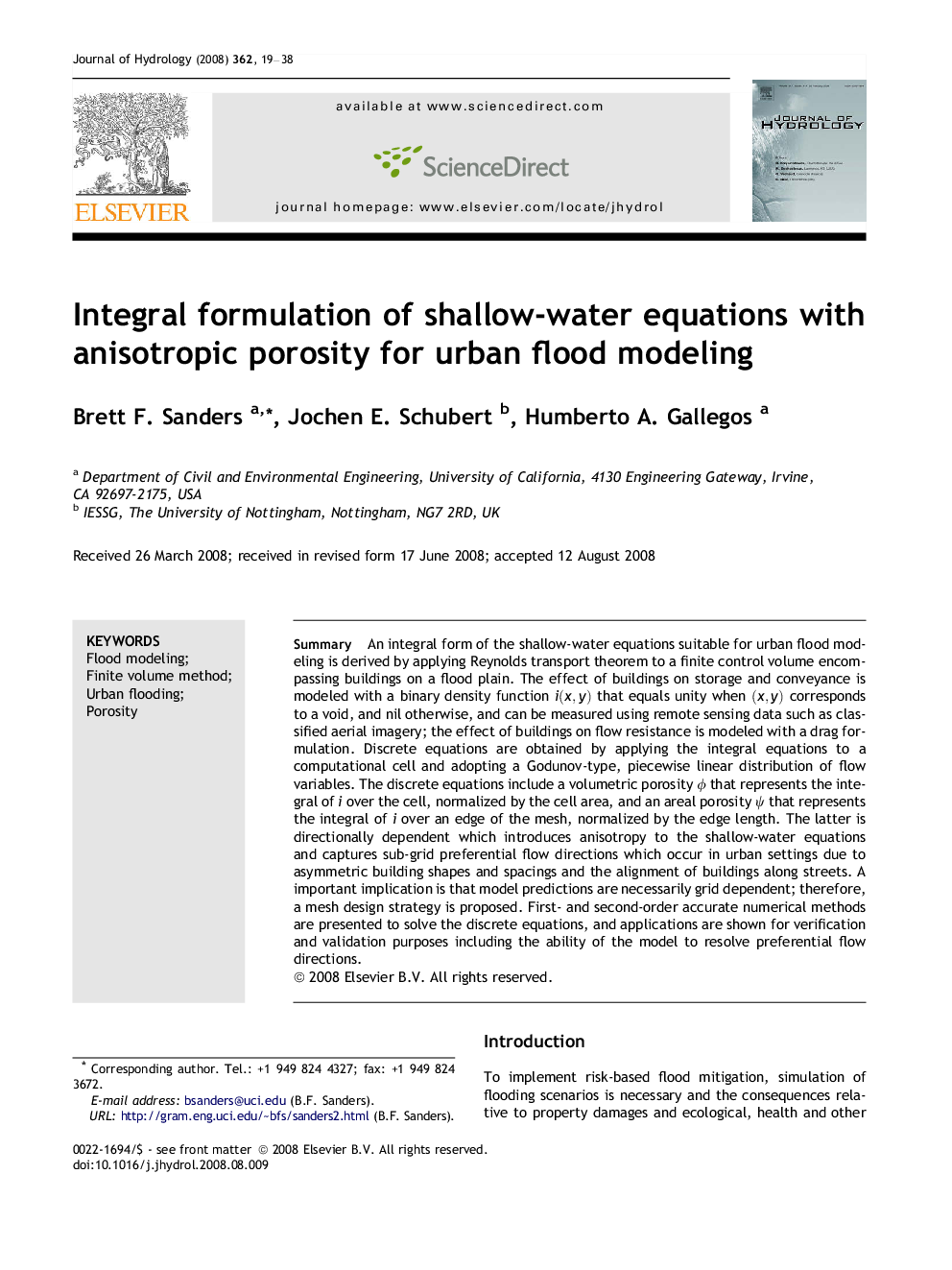| Article ID | Journal | Published Year | Pages | File Type |
|---|---|---|---|---|
| 4579173 | Journal of Hydrology | 2008 | 20 Pages |
SummaryAn integral form of the shallow-water equations suitable for urban flood modeling is derived by applying Reynolds transport theorem to a finite control volume encompassing buildings on a flood plain. The effect of buildings on storage and conveyance is modeled with a binary density function i(x,y)i(x,y) that equals unity when (x,y)(x,y) corresponds to a void, and nil otherwise, and can be measured using remote sensing data such as classified aerial imagery; the effect of buildings on flow resistance is modeled with a drag formulation. Discrete equations are obtained by applying the integral equations to a computational cell and adopting a Godunov-type, piecewise linear distribution of flow variables. The discrete equations include a volumetric porosity ϕϕ that represents the integral of ii over the cell, normalized by the cell area, and an areal porosity ψψ that represents the integral of ii over an edge of the mesh, normalized by the edge length. The latter is directionally dependent which introduces anisotropy to the shallow-water equations and captures sub-grid preferential flow directions which occur in urban settings due to asymmetric building shapes and spacings and the alignment of buildings along streets. A important implication is that model predictions are necessarily grid dependent; therefore, a mesh design strategy is proposed. First- and second-order accurate numerical methods are presented to solve the discrete equations, and applications are shown for verification and validation purposes including the ability of the model to resolve preferential flow directions.
